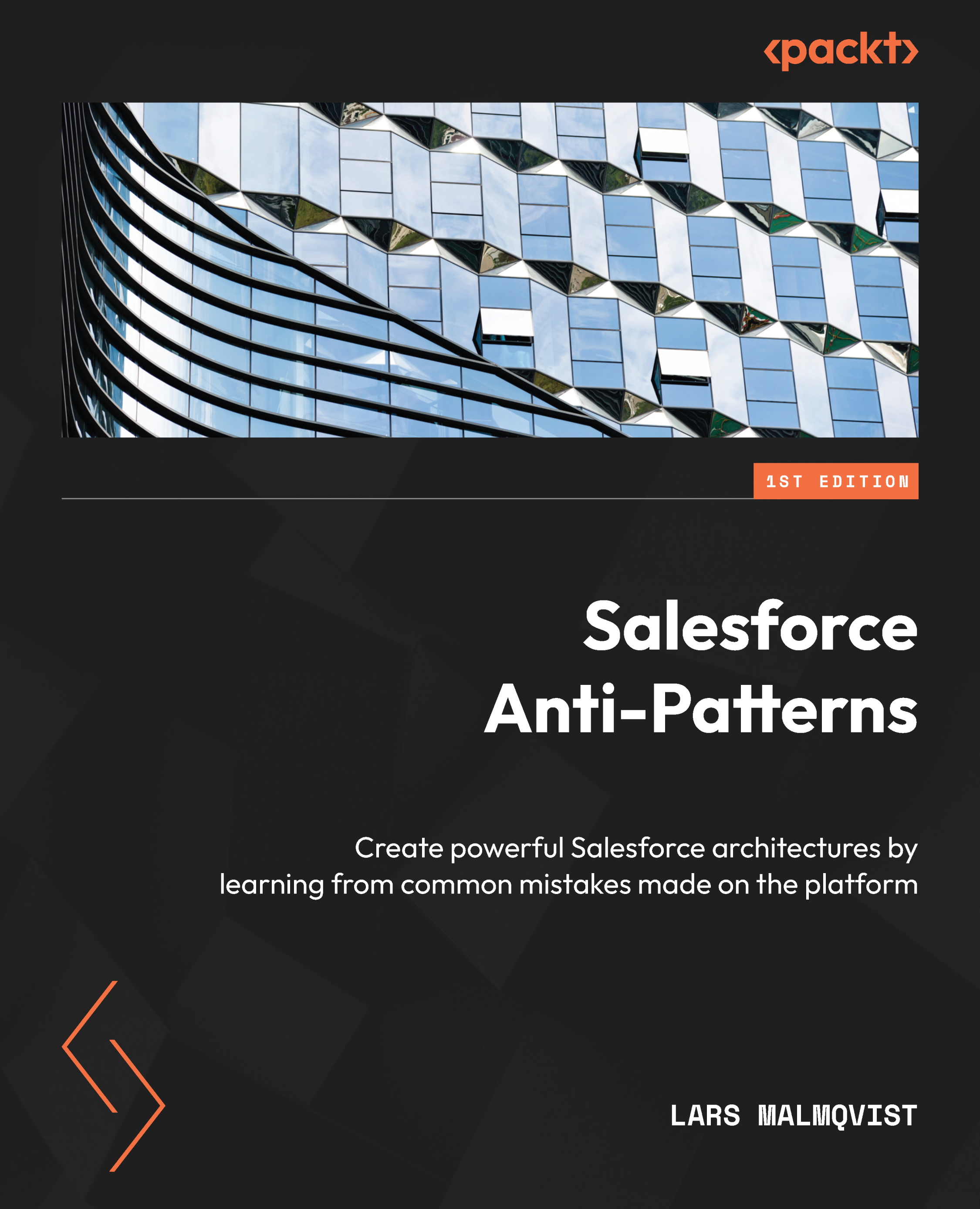Knowing the takeaways
In this section, we will abstract a bit from the specific patterns and instead try to pull out the wider learning points you can use in your day-to-day work as a Salesforce architect or in preparing for the CTA Review Board.
When architecting Salesforce solutions, you should be mindful of the following:
- Don’t rush into a solution based on what your organization usually does. Make careful consideration of options.
- When making a buy-versus-build decision, be careful to count the real TCO of a custom solution including long-term run and maintenance costs.
- Don’t design solutions to a specific license set if you can at all avoid it.
- Instead, push for a better commercial deal, different scope, or different license mix.
- You must make assumptions about your user base, but be careful about systematic bias.
- To help mitigate bias, use various consultation methods during development to de-risk.
- Don’t become too invested...































































